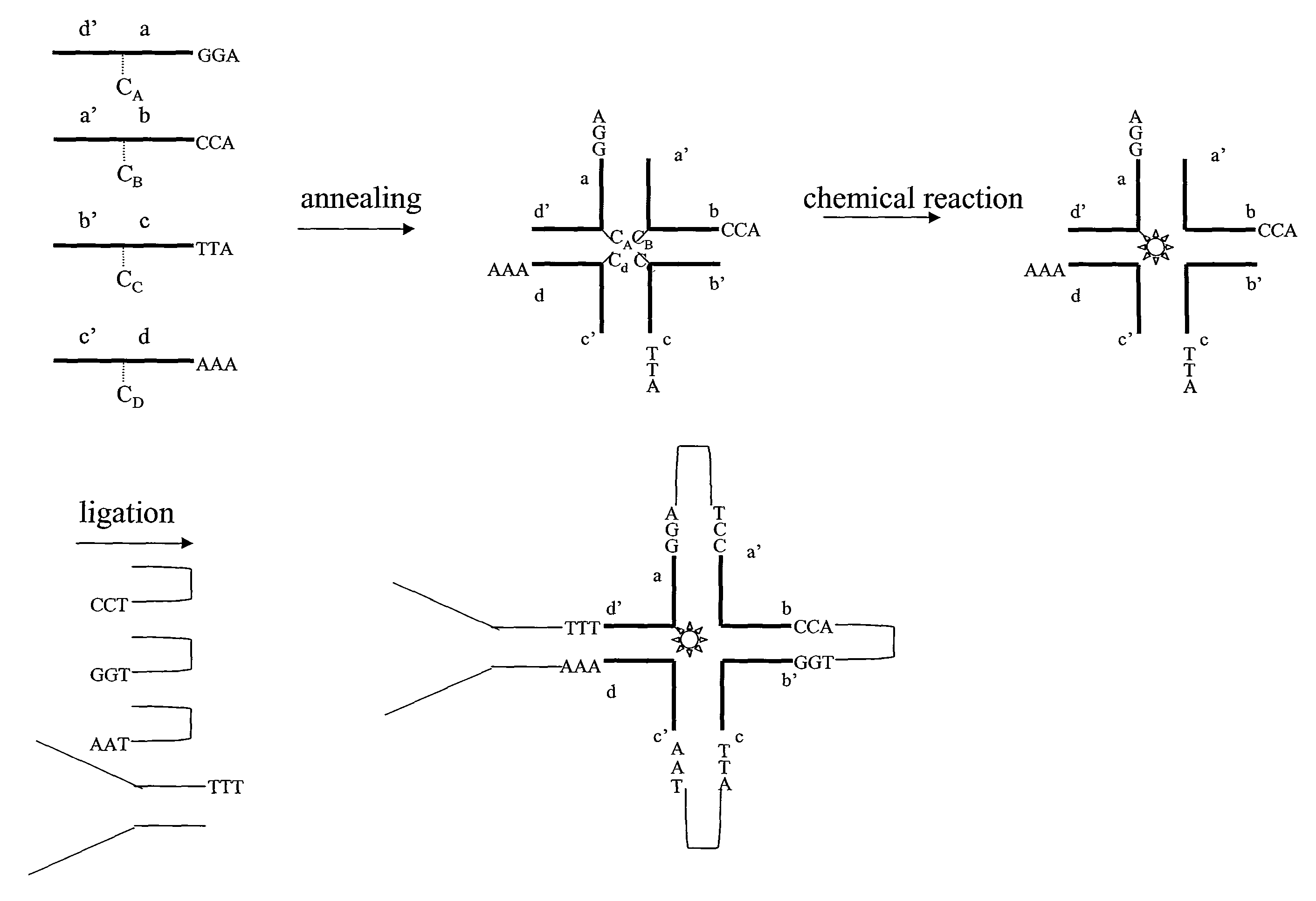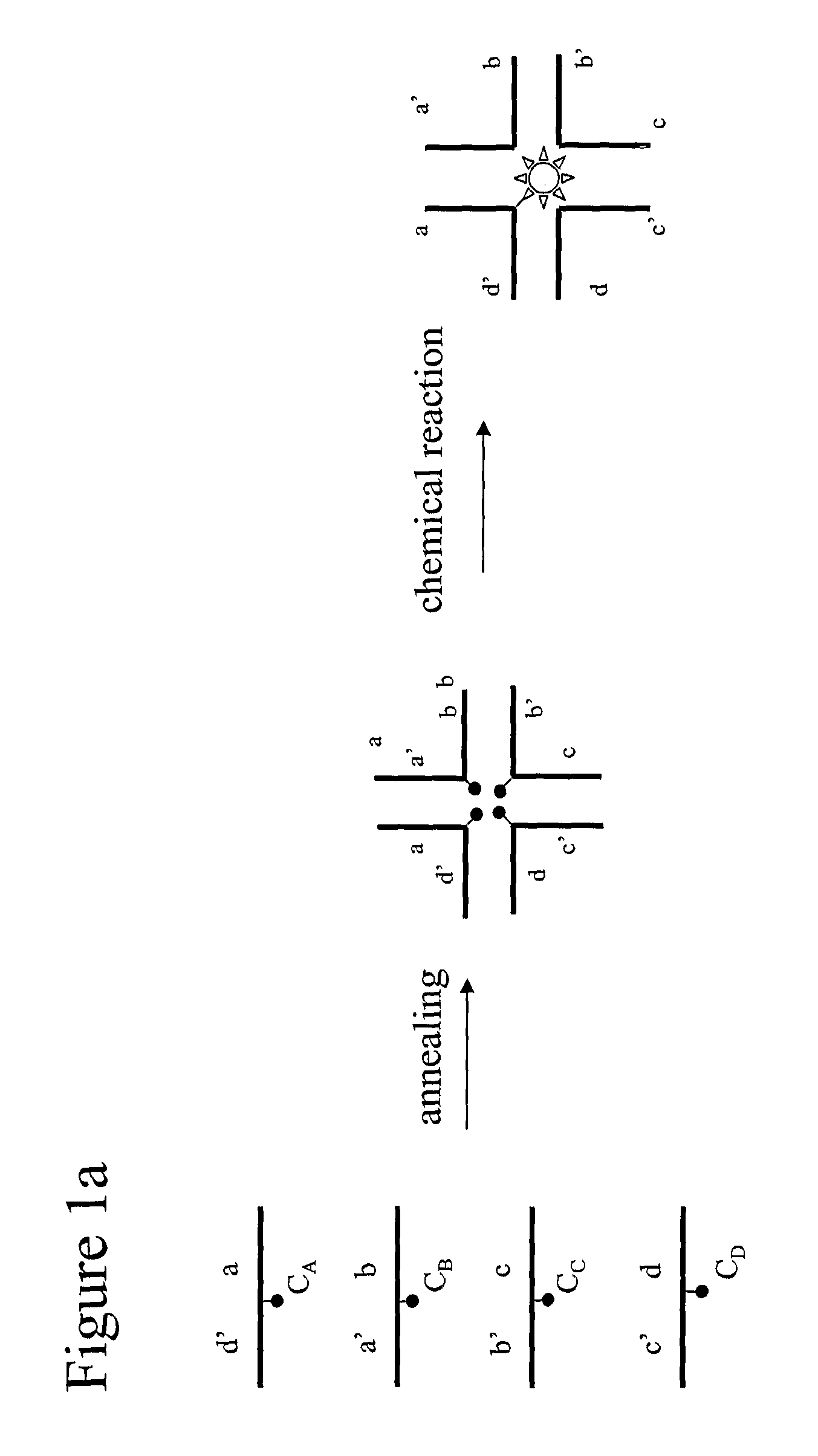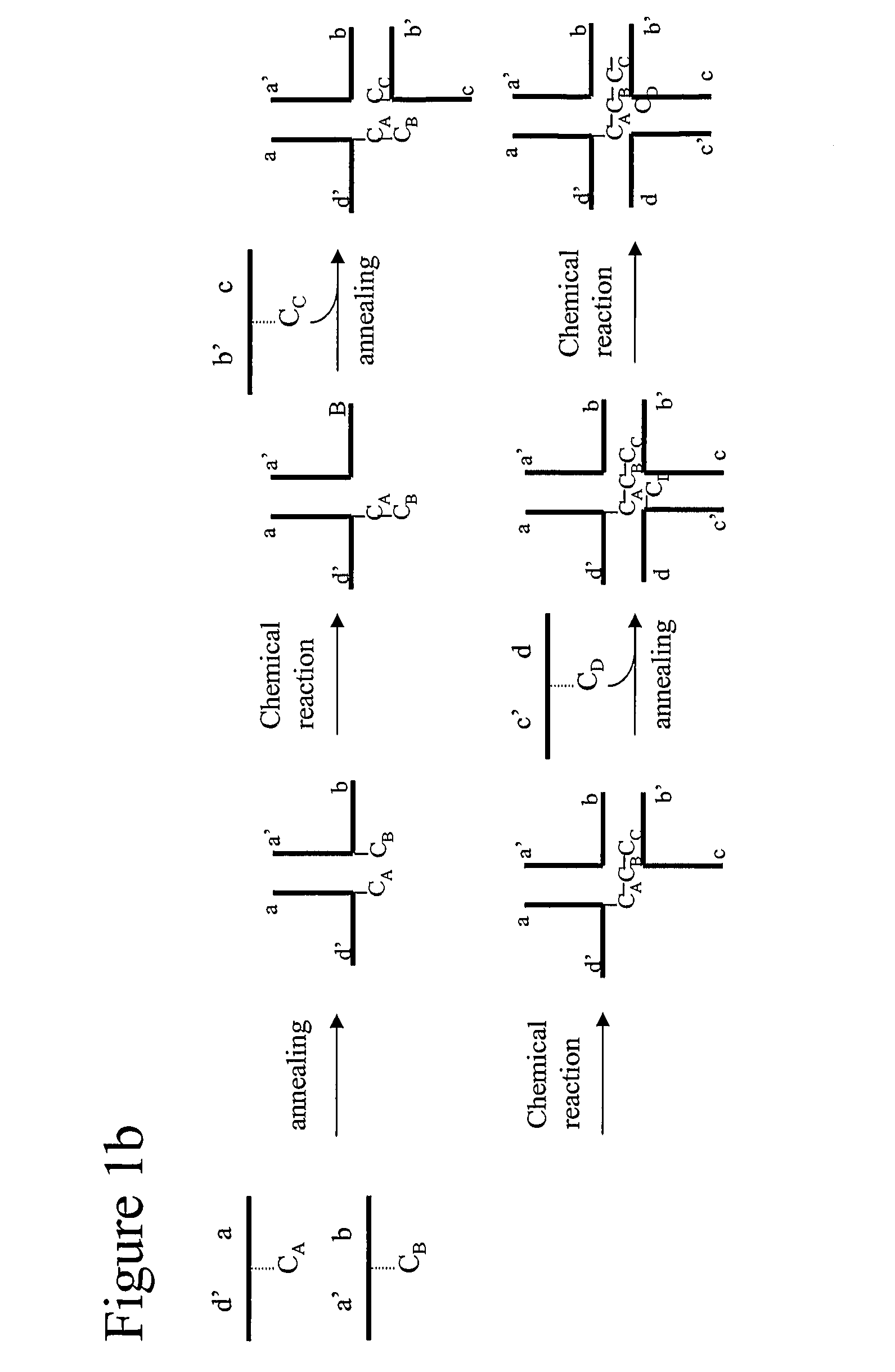Structural nucleic acid guided chemical synthesis
a structure nucleic acid and chemical synthesis technology, applied in the direction of nucleotide libraries, directed macromolecular evolution, library screening, etc., can solve the problems of complex libraries, inability to amplify enriched libraries, and limited system to display natural occurring products such as proteins and peptides
- Summary
- Abstract
- Description
- Claims
- Application Information
AI Technical Summary
Benefits of technology
Problems solved by technology
Method used
Image
Examples
example 1
[0249]The formation of trimeric and tetrameric DNA star structures by mutual complementary bi-specific oligonucleotides is demonstrated.
[0250]DNA oligonucleotides (prepared by DNA Technology Århus, Denmark) were mixed as indicated in the table shown in FIG. 8 in 2 uM concentrations each in 1× Ligase Buffer (New England Biolabs), 50 mM NaCl. The mixtures were incubated at 80 degrees C. for 2 minutes and slowly cooled to room temperature in a water bath. The products were analyzed by PAGE native (7.5% polyacrylamide), followed by staining with ethidium bromide, using standard protocols (Sambrook, J., Fritsch, E. F. and Maniatis, T. (1989) in “Molecular Cloning: a Laboratory Manual”, Second Edition, Cold Spring Harbor Laboratory Press, Cold Spring, Harbor, N.Y.).
[0251]Oligo6 and oligo7 (corresponding to Vip006 and vip007, respectively), oligo6 and oligo8 (corresponding to vip006 and vip008) and oligo7 and oligo8 (corresponding to vip007 and vip008, respectively) each have a mutual comp...
example 2
[0253]Conversion of trimer DNA star structure into a single contiguous strand of DNA by T4 DNA ligase.
[0254]The successful creation of a hi-stemmed DNA star structure consisting of a single uninterrupted strand of DNA was demonstrated in this example. Mutual complementary bi-specific oligonucleotides were annealed, and subsequently ligated to form a continuous strand of DNA.
[0255]DNA oligoes (prepared by DNA Technology Århus, Denmark) were mixed as indicated in FIG. 9 in 2 uM concentrations each in 1× Ligase Buffer (New England Biolabs), 50 mM NaCl. The mixtures were incubated at 80 degrees C. for 2 minutes and slowly cooled to room temperature in a water bath.
[0256]The 5′ termini of the oligonucleotides were phosphorylated by T4 DNA polynucleotide kinase. A mixture consisting of 1.67 uM star structure, 1×DNA ligase Buffer (New England Biolabs), 50 mM NaCl and 0.2 u / ul T4 DNA polynucleotide kinase (New England Biolabs, cat# M0201), was prepared and incubated for 30 minutes at 37° C....
example 3
Amplification of Tri-Stemmed DNA Star Structure
[0261]The successful amplification of trimeric DNA star structure consisting of one contiguous strand of DNA was demonstrated in this example. Mutual complementary bi-specific oligonucleotides were annealed, ligated and subsequently used as a template in a primer extension reaction.
[0262]DNA oligoes (prepared by DNA Technology Århus, Denmark) were mixed as indicated below in 2 uM concentrations each in 1× Ligase Buffer (New England Biolabs), 50 mM NaCl. The mixtures were incubated at 80 degrees C. for 2 minutes and slowly cooled to room temperature in a water bath.
[0263]The 5′ termini of the oligonucleotides were phosphorylated by T4 DNA polynucleotide kinase. A mixture consisting of 1.67 uM star structure, 1×DNA ligase Buffer (New England Biolabs), 50 mM NaCl and 0.2 u / ul T4 DNA polynucleotide kinase (New England Biolabs, cat# M0201), was prepared and incubated for 30 minutes at 37 C
[0264]A phosphodiester bond between juxtaposed ends o...
PUM
| Property | Measurement | Unit |
|---|---|---|
| length | aaaaa | aaaaa |
| length | aaaaa | aaaaa |
| length | aaaaa | aaaaa |
Abstract
Description
Claims
Application Information
 Login to View More
Login to View More - R&D
- Intellectual Property
- Life Sciences
- Materials
- Tech Scout
- Unparalleled Data Quality
- Higher Quality Content
- 60% Fewer Hallucinations
Browse by: Latest US Patents, China's latest patents, Technical Efficacy Thesaurus, Application Domain, Technology Topic, Popular Technical Reports.
© 2025 PatSnap. All rights reserved.Legal|Privacy policy|Modern Slavery Act Transparency Statement|Sitemap|About US| Contact US: help@patsnap.com



